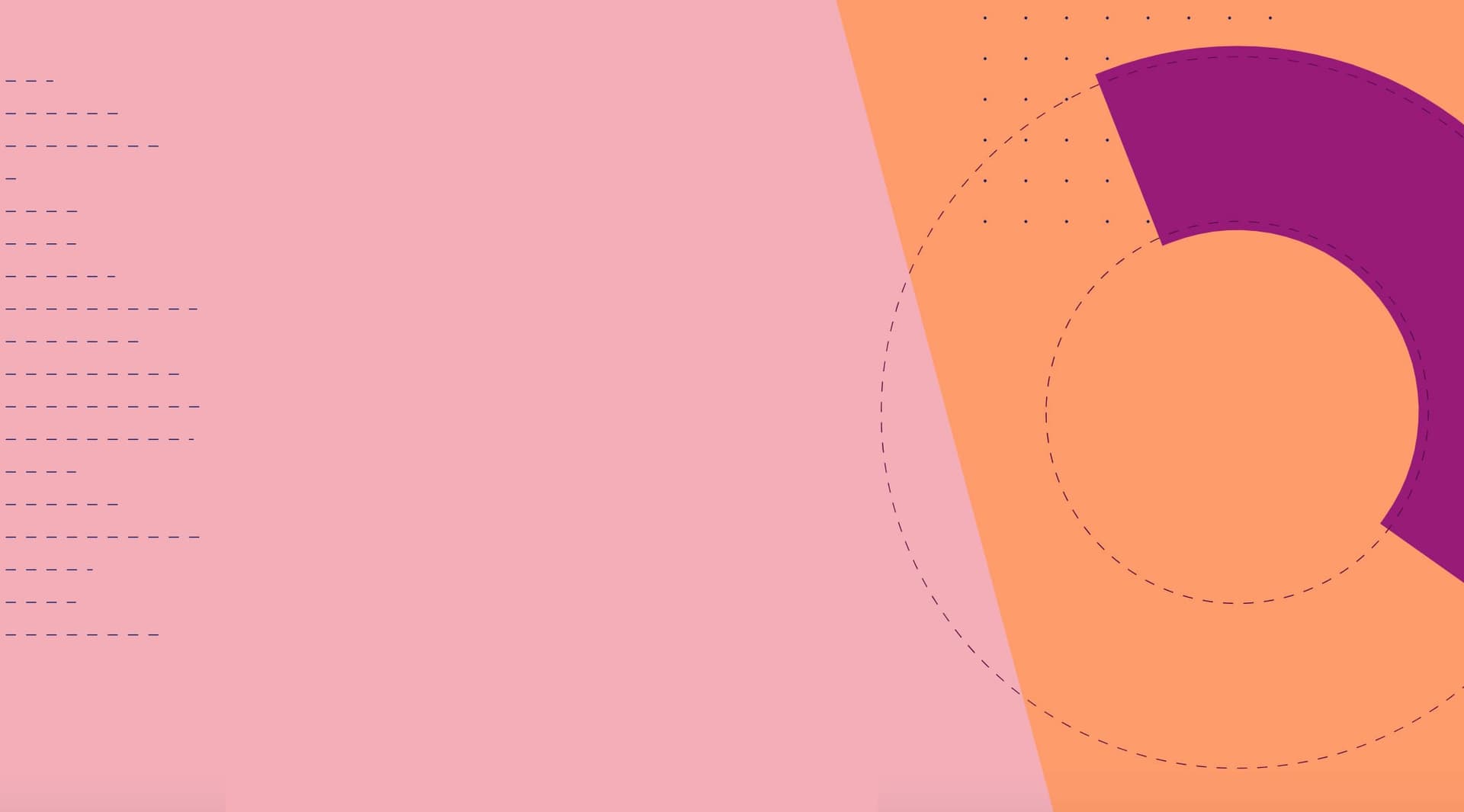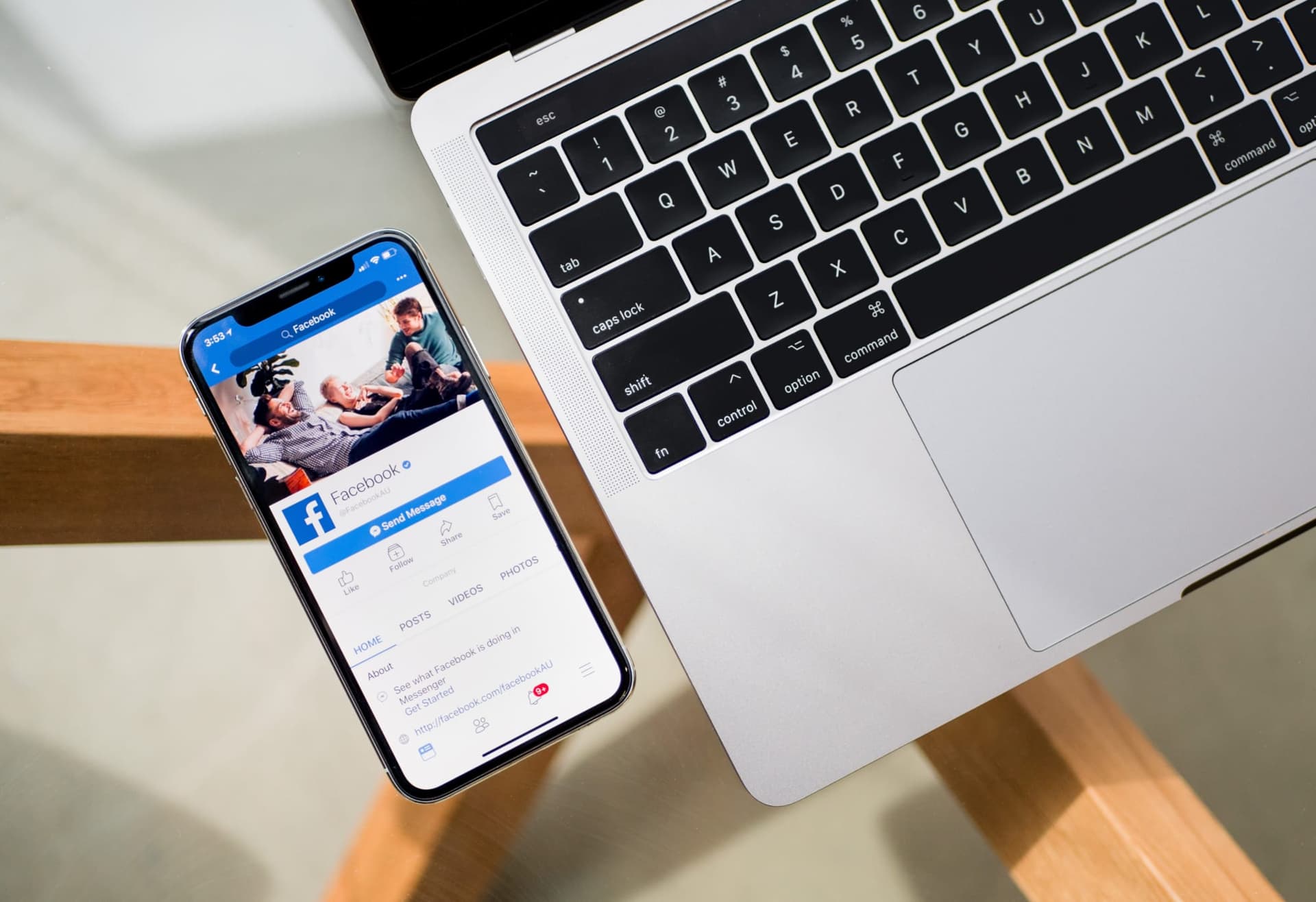Whilst in the past week, I wanted to focus on tips to help you get the most out of Twitter and using Facebook, there is something quite different about today’s post.
How does predicting the future with the likes of Twitter and Facebook sound for you? Personally, I think this is really fascinating.
At over 250 million Tweets sent every day, there is a hell of a lot of information out there. A few smart people have said, that analyzing all these messages can give a significant insight over what will happen in the future.
Let’s take a look at these 5 examples and see, if there is any truth in this.
1.) Twitter Accurately Predicts Politician’s Victory at New Hampshire Primary
This first one is the most recent example. Politician Mitt Romney won the Primary election of New Hampshire last week. The stunning part is that Globalpoint Research, did an in-depth sentiment analysis about Tweets related to the election.
The research firm, in a statement beforehand, predict that this based on Tweets:
Romney would not only have the edge, second place would be a tight call between Ron Paul, Jon Huntsman and Rick Santorum.
The actual results are as follows:
Romney came out on top with 37% of the vote, followed by Paul (23%), Huntsman (17%), Gingrich (10%), Santorum (10%) and Texas Gov. Rick Perry (1%).
Pretty crazy right? Twitter’s prediction beat every expert and national poll by much higher accuracy. It is especially interesting what this means for the future of elections. Mashable had an interesting comment on the debate, saying that Tweets are much less biased than polling answers. What do you think of this? Is Twitter accurate enough to tell you who the next President is?
2.) Twitter knows how you will be feeling this Friday
Here is another very interesting one for you. Scott Golder (@redlog), from The University of Cornell took a look at close to half a Billion Tweets. What researchers wanted to find out was the following:
“How do our moods and feelings change throughout the day, week and year?”
The interesting part here is that they analyzed messages from 2.4 million people in 84 different countries. This makes a lot of sense, as they could also compare different cultures, with different weekly routines and seasons next to each other.
Here are some of the most interesting findings, some more obvious than others:
- Daily: The most negativity throughout the week happens on Friday, and (suddenly) disappears in the late afternoon.
- Weekly: On a daily basis, we are happiest in the morning and then our mood goes downhill. In the late evening it bounces back with another spike in positivity.
- Seasons: Through comparing different countries, the researches wanted to know if sunlight in different seasons affects our mood. The finding was this: “It’s not how much daylight you’re getting, it’s the relative daylight — whether the days are getting longer or shorter — that makes a difference in positive mood.”
If you ask me, this is pretty exciting stuff! Another insight that is well worth mentioning is that happiness is strongly tied to our weekly structures based on our culture. For example in United Arab Emirates mood patterns are very different as they have a Sunday through Thursday workweek.
And all this, solely from looking at a few Tweets. You can read up on Cornell’s study if you want.
3.) Did Twitter predict the revolution in Egypt?
When in the last year a massive revolution started to rise in Egypt and other Middle Eastern countries, Topsy labs asked themselves:
Could we not have predicted all this based on the hashtags #yemen, #iran and #egypt from Tweets going around?
Whilst Twitter played a major element in the revolution Topsy Labs did a correlation analysis of Tweets mentioned. What’s most interesting is that the graph strongly correlates with actual events marked on the timeline:
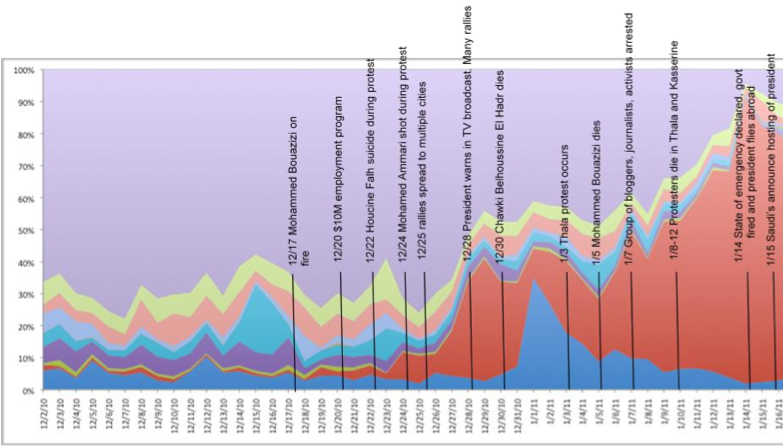
I am very curious which other events Twitter will be able to predict based on such analysis. Clearly it is Twitter where news is first broken.
4.) Predict the future yourself with Twitter and Timeu.se
A handy tool, also built by the before mentioned Scott Golder is called TimeUse. And essentially, it allows you to find out what people are doing all day. And when they do it.
I did 2 very interesting searches. For “happy”, the biggest spike happens on Sundays, so apparently that’s when most people are happy.
I then tried “working out”, where the biggest spike is on a Monday. That’s quite interesting as it means most people are back hitting the Gym throughout Monday.
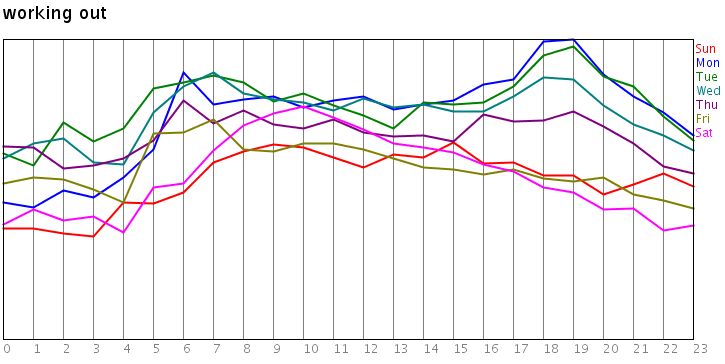
Want to give it a go yourself? Check out Timeu.se and let me know what you can predict about the world.
5.) Hedgefund to make bets based on Tweets – beats the market
As the last example, let’s talk about money for a second. Derwent Capital, founded a new fund, that will make investments solely based on sentiment analysis from Twitter. They put $41 million dollars into the fund and then let the Tweet roulette decide its faith.
What’s the outcome?
“Derwent Capital, the hedge fund that is using Twitter sentiment to make its investments, beat the market–and other hedge funds–in its first full month of trading,” (Lauren Dugan, AllTwitter)
This is pretty powerful if you ask me and goes way beyond anything I could have ever imagined happening through Twitter. Here are more insights about how the algorithm from Derwent Capital works in depth.
6.) Predicting and stopping the spread of diseases with Twitter
I am sure you have come across the Google Flu Trends before. It’s essentially a chart that tells you when most searches are happening for various medical treatments and medicines. It is named to be a good indicator for when and how diseases are spreading.
Some research from Johns Hopkins University recently suggested that Twitter may be even more accurate and faster determining the spread of diseases though. They looked at over 2 billion Tweets. They wanted to find out this:
“Our goal was to find out whether Twitter posts could be a useful source of public health information.”
Some of the findings where very interesting, saying that “a number of users were taking antibiotics to treat the flu, even though antibiotics don’t work on the flu.” The potential of this, essentially meaning that public services could take the right steps to avoid such misunderstandings in the future is huge.
Here are a few very interesting findings of symptoms, treatments and general information coming from these Tweets:
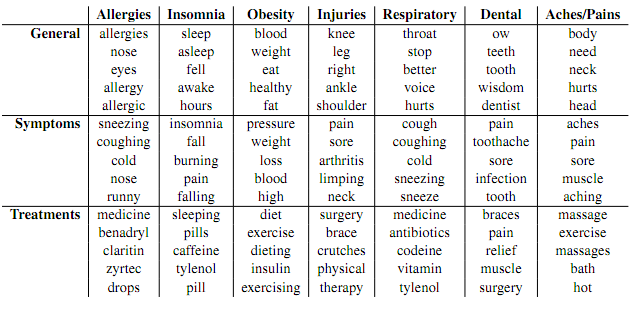
You can also read more about this here.
What else can we make happen with Twitter?
Yes, I have to say, writing this blogpost was one of the most interesting ones ever. Personally, I am convinced there will be lots of other incredible use cases of how Twitter can help us in the future.
It is even something that we consider doing in the future with Buffer. Imagine, there are so many Tweets sitting in the queue, which aren’t yet published. Filtering these and predicting what news feeds will look like is pretty exciting.
Enough of my ideas now though, and over to you. What do you think about these examples of how Twitter predicts what is going to happen? Do you see any other potentials where Tweets could be a good indicator of what will happen in the future?
Try Buffer for free
190,000+ creators, small businesses, and marketers use Buffer to grow their audiences every month.

